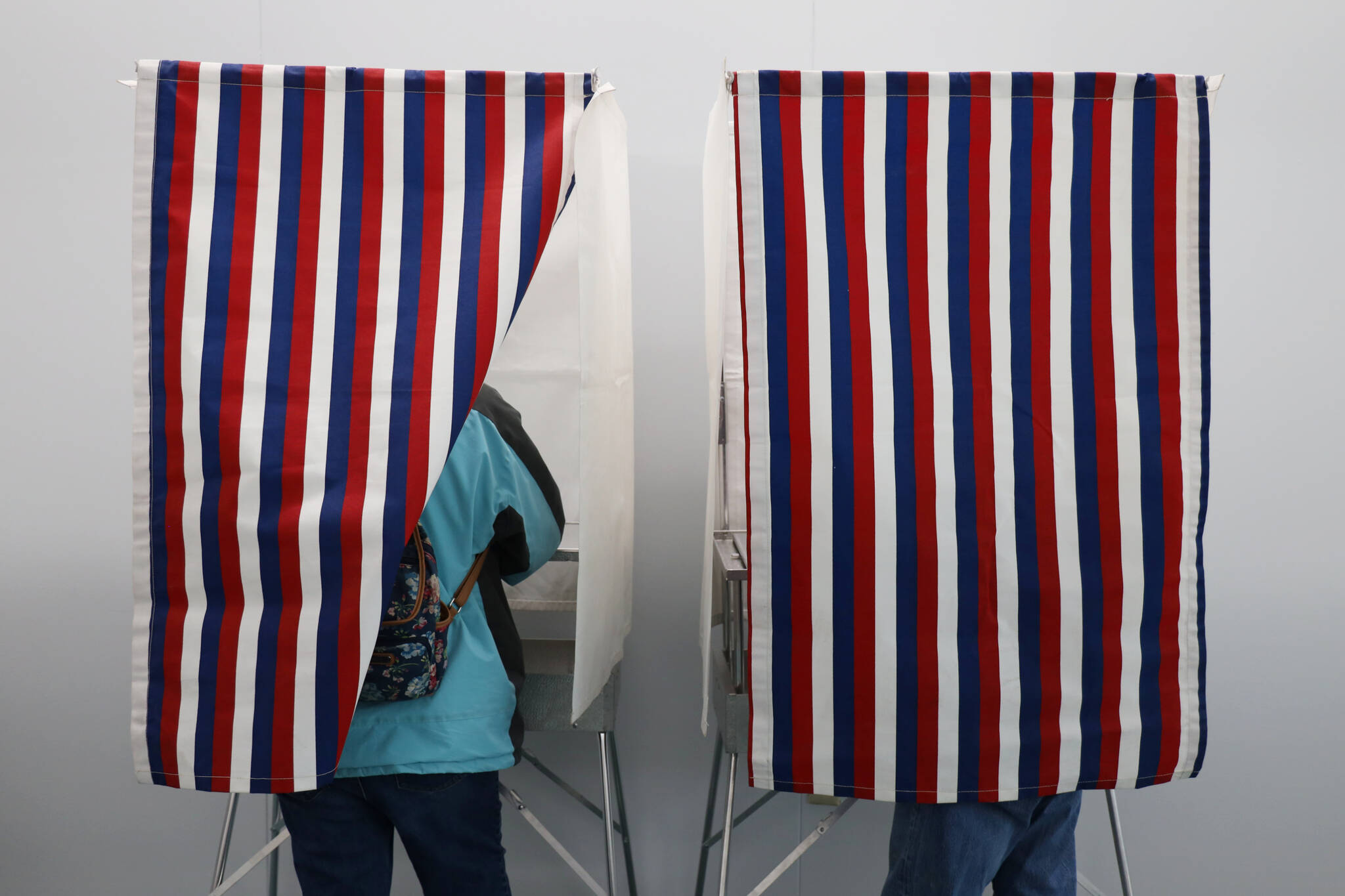State campaign finance reports due a week before the Nov. 8 general election show all three of the major candidates for governor have enough cash left to keep up their heavy late-cycle spending, but it remains a lopsided contest between the two groups on opposing sides of a ballot measure calling for a constitutional convention.
Independent former Gov. Bill Walker raised more than the other gubernatorial candidates combined between Oct. 8 and 29, while Republican incumbent Gov. Mike Dunleavy has the most cash remaining, according to campaign report filed with the Alaska Public Offices Commission. Walker raised $338,256.86, Democrat Les Gara $152,459.61 and Dunleavy $121,555.65, according to the most-recent filings.
But the challengers are both trailing in cash remaining after spending heavily during that period. Dunleavy reports $273,078.56 cash on hand, Walker $196.485.28 and Gara $162,870.56 (without subtracting $21,562.71 in reported debts).
There are, per usual for campaigns, some qualifiers in those numbers.
Walker, for instance, got $250,000 of his recent contributions from three supporters of the state’s ranked choice voting system: $200,000 from John and Laura Arnold of Texas (with the report listing him as a philanthropist) and $50,000 from Jason Carrol of New York City who is listed as a partner in an trading company.
Gara, meanwhile, got maybe the oddest “largest contributor” of the campaign: $30,000 from Walker’s campaign to fund a joint ad opposing Dunleavy. The two challengers have been urging voters to rank them first and second on ballots (in whatever order) since polls and results from the August primary election suggest their combined totals are within range of a majority.
While such quirks are a result of ranked choice voting this cycle, they also are an indicator the first-time method is working as intended, said Austin Baird, a Walker campaign spokesperson, who also noted the unlimited amount of campaign contributions allowed this year is an additional major factor.
“Bill and (running mate Heidi Drygas) have said they support bringing back campaign finance limits, but right now there’s a need to play by the rules,” he said. “One source is definitely people who look at Alaska and what it has established with ranked choice voting, and what it might mean for other places.”
The new voting system is also making for a more competitive race by ensuring both Walker and Gara remain viable candidates instead of splitting a traditional vote and finishing far behind Dunleavy, Baird said. As for Walker being Gara’s biggest recent donor, “I think it’s just a reflection of how important it is for Alaskans to complete a ranked choice ballot.”
The governor’s biggest individual donor was $20,000 from John Nau, a major Republican party contributor who is listed as the CEO of a Texas beverage company. But Dunleavy is also facing scrutiny due to using his official administrative staff as campaign “volunteers” and a complaint accusing the independent expenditure group A Stronger Alaska of illegally raising millions in a coordinated effort with the governor’s campaign.
APOC declined to issue a finding before the election, but on Oct. 26 warned A Stronger Alaska to cease spending while the investigation is pending. As a result, aside from spending $77,000 on polling a couple days later the group is leaving untouched the $2.4 million remaining of about $3 million raised.
The other candidate on the ballot, Republican Charlie Pierce, has been an afterthought in fundraising and polls throughout the campaign, having resigned as the mayor of the Kenai Peninsula Borough in the wake of a sexual harassment claim from a borough employee that is now the subject of a lawsuit. He raised $900, spent $3,738.86 and has $3,294.63 cash on hand.
All four candidates spent far more than they raised using funds remaining from their seven-figure (six in Pierce’s case) cumulative campaign accounts, with the dominant portions directed toward various forms of advertising.
Walker’s campaign was the dominant spender at about $600,000, nearly all on broadcast ads including more than $280,000 on TV/streaming ads, $80,000 on mailers. and about $50,000 on Facebook and more than $30,000 on Google ads. Gara spent nearly $497,000 on a more even mix of ads, including $120,000 on direct mail, $80,000 on TV and $60,000 on social media. Dunleavy spent about $406,000 on a seemingly similar mix, although about $110,000 (including some of the largest individual amounts) were for what was reported as “voter engagement.” Pearce spent about $3,700, including nearly $3,500 on radio ads.
Constitutional cash
The only other significant statewide funding in the APOC reports is for the lone ballot measure on a constitutional convention, although the group opposing the measure has dominated those in favor throughout the campaign.
On a positive note (literally) for ConventionYES, which ended the last reporting period more than $3,000 in debt, the group reported $40,255 in contributions and $20,727.71 in expenses during the most recent period, leaving it with more than $16,000 during the final week before the election. Meanwhile the group No on 1 Defend Our Constitution reported $1,904,950.01 in income and $2,163,638.71 in expenses, with $696,135.99 cash on hand (but with $486,067.95 in debts, making their actual surplus far less).
The major talking point of the pro-convention group is nearly all of their opponents’ contributions have come from the Sixteen Thirty Fund in Washington, D.C., a so-called “dark money” group because it does not disclose individual contributors. But the no group is managing to reach far more people with its talking points, with more than $1.6 million of its’recent spending going toward broadcast and digital advertising.
• Contact Mark Sabbatini at mark.sabbatini@juneauempire.com

